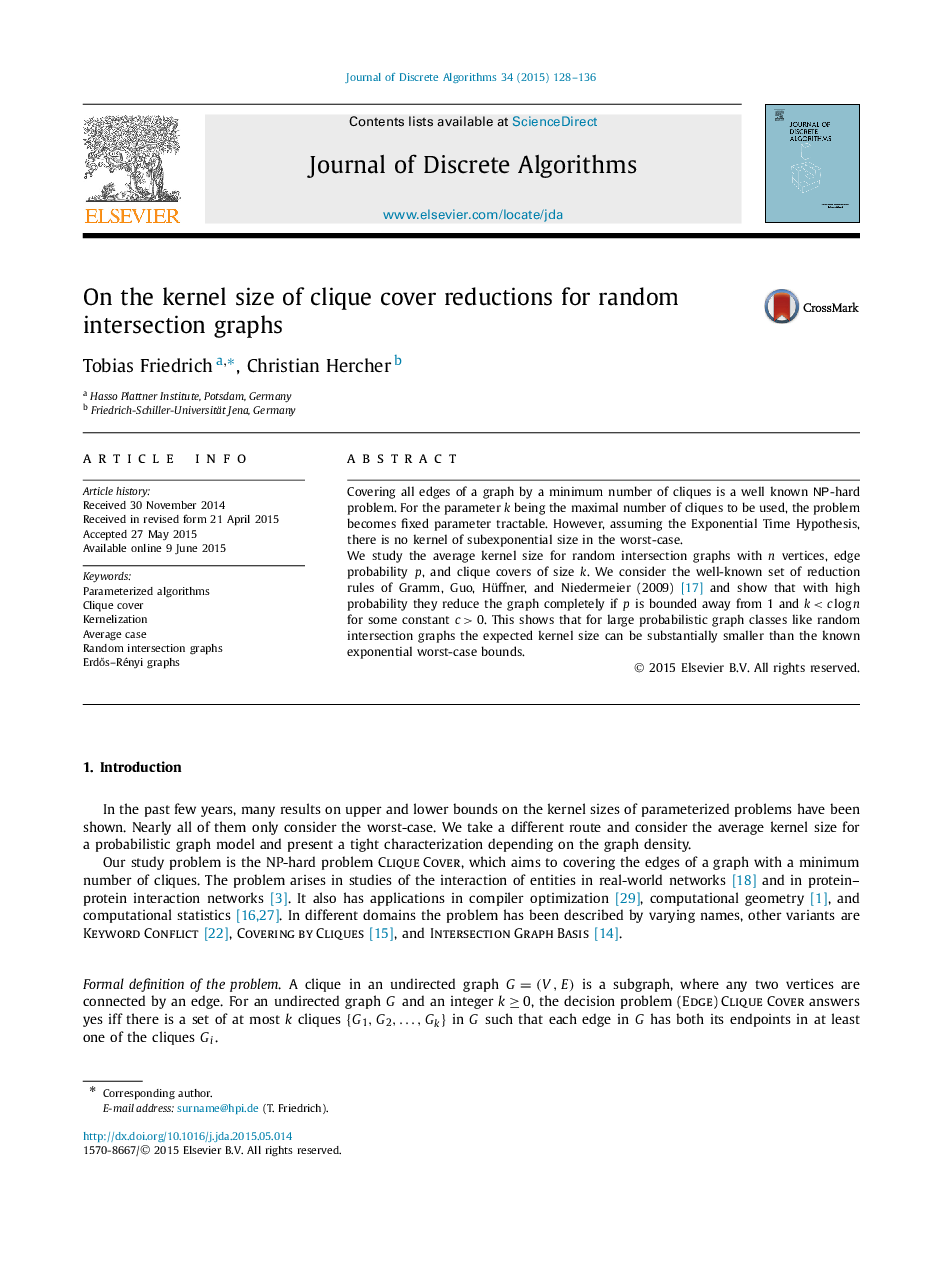| Article ID | Journal | Published Year | Pages | File Type |
|---|---|---|---|---|
| 431612 | Journal of Discrete Algorithms | 2015 | 9 Pages |
Covering all edges of a graph by a minimum number of cliques is a well known NPNP-hard problem. For the parameter k being the maximal number of cliques to be used, the problem becomes fixed parameter tractable. However, assuming the Exponential Time Hypothesis, there is no kernel of subexponential size in the worst-case.We study the average kernel size for random intersection graphs with n vertices, edge probability p, and clique covers of size k. We consider the well-known set of reduction rules of Gramm, Guo, Hüffner, and Niedermeier (2009) [17] and show that with high probability they reduce the graph completely if p is bounded away from 1 and k
